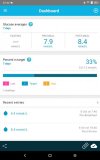If there was any way your budget could stretch to a BG meter you would be able to check how your body copes with these for yourself.
The most affordable meters members here have found are the
SD Gluco Navii or the
Spirit Tee2 - which both have test strips at around £8 for 50. I recognise that this may be difficult for you with your limited income, but unfortunately it’s unlikely you would get a meter from your GP unless you were on a medication likely to cause hypos

If there were any way you could fund a meter though, you’d be able to check your individual response to different sources (and portion sizes) of carbs by checking immediately before eating and 2hrs after the first bite (initially in a way the numbers themselves matter less than the differences between them). Ideally you would want to see a rise of no more than 2-3mmol/L at the 2hr mark.
Once you can see how you respond to different meals you can begin experimenting with reducing portion sizes of the carbs where you see bigger rises. You might find that you are particularly sensitive to carbohydrate from one source (eg bread), but have more liberty with others (eg oats or basmati rice) - It’s all very individual! You might even find that just having things at a different time of day makes a difference - with breakfast time being the trickiest.
If you can’t access a meter, you can simply aim to reduce the amount of total carbs in your menu, and aim for ones (including rye bread) which have a reputation for being slowly absorbed.
Good luck with it all and let us know how your BGs respond to the Metformin - hopefully that will help to reduce any insulin resistance you are experiencing.
🙂

